If you thought sweet-and-savory teriyaki salmon was off the menu because you’ve cut out gluten and refined sugar, think again: this ridiculously easy teriyaki salmon recipe is flavorful, Whole30-friendly, and perfect for weeknights!
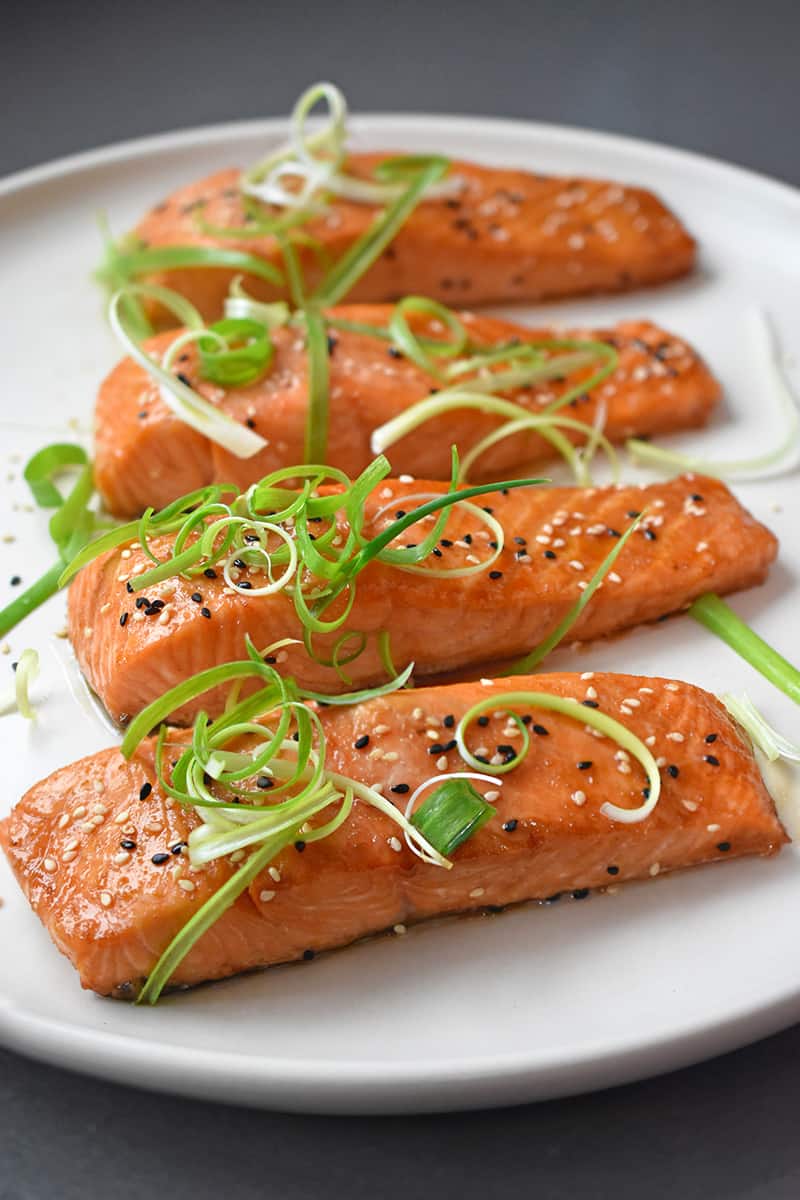
Table of Contents
- A healthy and easy baked teriyaki salmon recipe!
- It’s all about the sauce
- How long can you marinate the Teriyaki Salmon?
- What type of salmon should you use?
- Can you make it in an air fryer?
- How do you know when the salmon is done?
- Ingredients
- How to make teriyaki salmon
- What do you serve with it?
- How do you store leftovers?
- More healthy fish recipes
- Easy Teriyaki Salmon Recipe
A healthy and easy baked teriyaki salmon recipe!
This easy baked teriyaki salmon hits all the flavor notes of a classic teriyaki sauce (you know—soy sauce, sake, mirin, ginger, garlic, and sugar), but it’s made with real food ingredients! To be sure, my homemade teriyaki sauce isn’t as syrupy-thick or cloyingly sweet as restaurant-style teriyaki, but taste is paramount. And when it comes to flavor, I’ll have you know that my kids gobble this stuff up, and they’re my pickiest and most important customers.
Best of all, this recipe is INSANELY SIMPLE. Just marinate, bake, garnish, and eat!
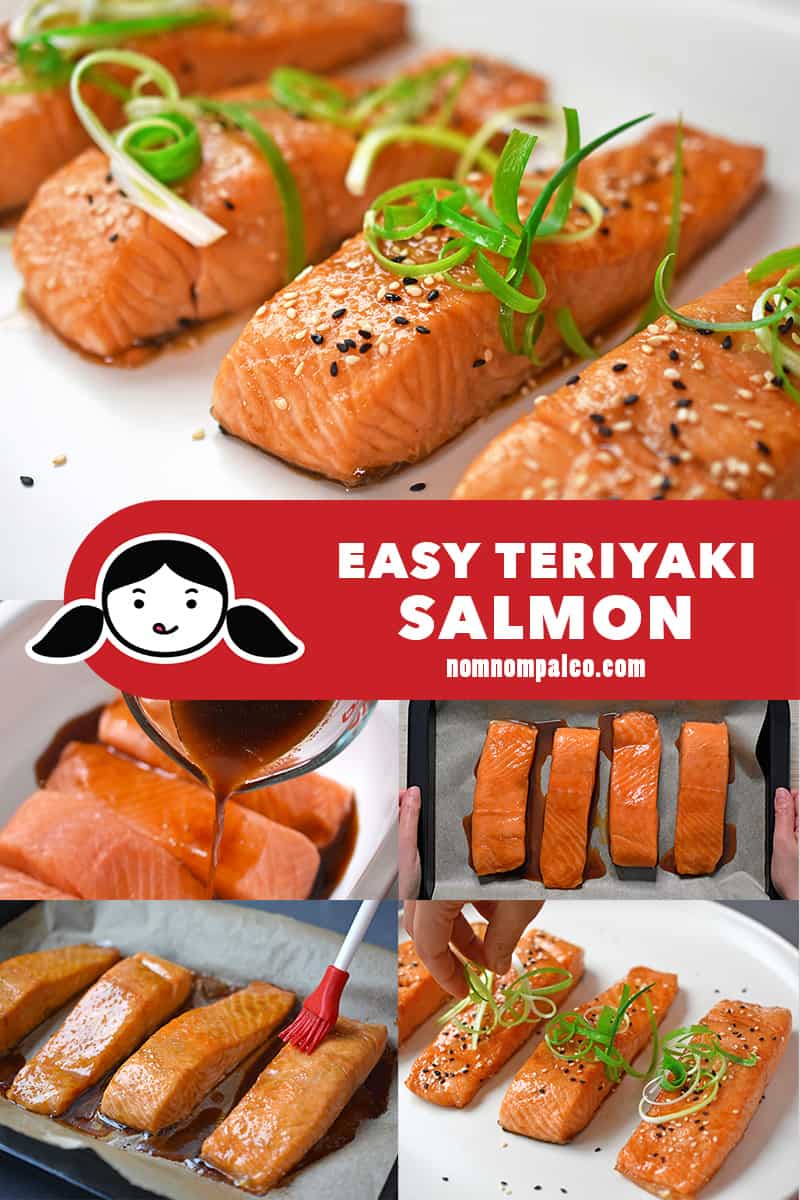
It’s all about the sauce
Would it shock you to learn that my gluten-free teriyaki sauce is basically just my All-Purpose Stir-Fry Sauce?
When I created my All-Purpose Stir-Fry Sauce, my goal was to make a hyper-versatile flavor-booster that can be used for amping up the taste of, well, EVERYTHING. I wanted an exponential return on the 5 minutes it took me to shake up a jar of this tasty goodness…and I’m pretty sure I succeeded! (Check out this ever-growing list of recipes you can make with it!)
How long can you marinate the Teriyaki Salmon?
You can marinate the salmon filets for as little as 15 minutes (i.e., the time it takes to preheat the oven), or as long as 8 hours. I wouldn’t push it past 8 hours, though; the acidity of the sauce can make the salmon mushy if you keep it in there too long.
What type of salmon should you use?
I prefer wild king salmon for the taste—and the high fat content makes it hard to overcook. However, wild king salmon can be really expensive, so (being a thrifty child of immigrants!) I often opt for responsibly farmed steelhead trout or Atlantic salmon.
On the other hand, I don’t love sockeye salmon—I find it a bit too fishy, and it can be easily overcooked. I’d rather choose sea bass, halibut, or cod if I can’t find my top choices listed above.
(Yes, I know that picking the right seafood can be confusing. That’s why I always consult the Monterey Bay Aquarium Seafood Watch for the latest recommendations, and you should, too.)
Can you make it in an air fryer?
Yes! I normally create a sling out of aluminum foil or parchment paper for the air fryer basket before putting the fillets inside for easy removal. The cooking temperature is the same—400°F—but I would check the doneness of the salmon starting at the 7 minute mark because the fish will cook faster in an air fryer. (This is the air fryer I use.)
How do you know when the salmon is done?
The most reliable way to check if your salmon is done cooking is with a meat thermometer inserted into the thickest part of the fillet. My family likes our salmon to be medium (cooked through, but not chalky and dry), which is about 130°F to 135°F. If you want your salmon to be medium-rare, aim for 120°F.
The USDA recommends cooking salmon to 145°F, but that’s overcooked in my opinion.
Ingredients
- Salmon fillets, about 5 ounces each: See my tips above on picking the right salmon for this dish.
- All-Purpose Stir-Fry Sauce
- Toasted sesame seeds
- Scallions / Green onions
How to make teriyaki salmon
Place the salmon fillets in a high-sided baking dish where they’ll fit snugly.
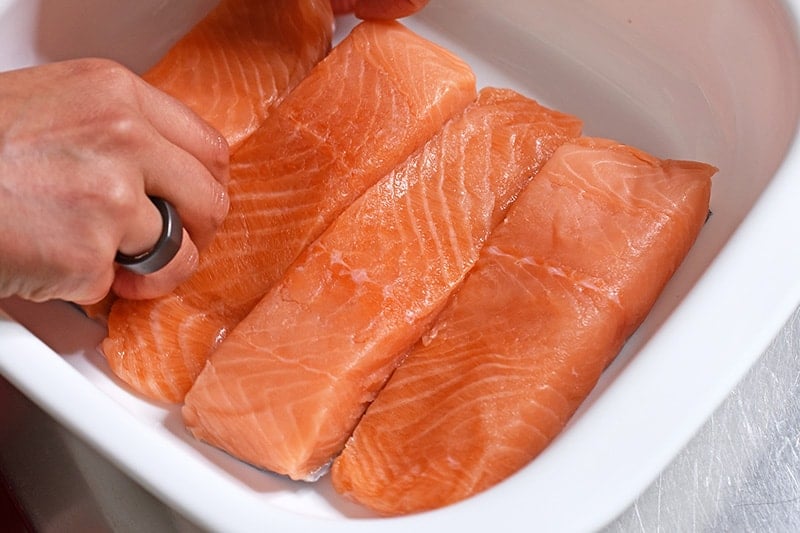
Pour in most of the All-Purpose Stir-Fry Sauce, but reserve about 2 tablespoons of it. You’ll brush it on at the end to add an extra punch of umami.
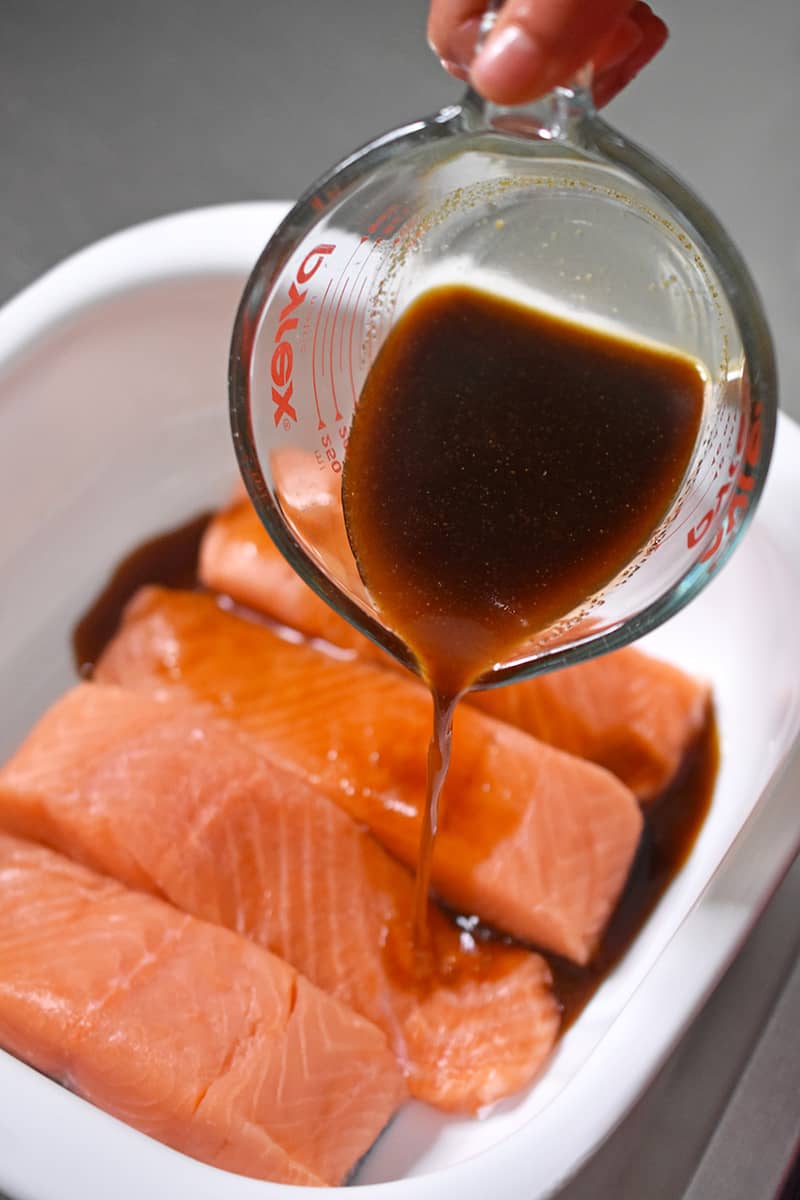
Turn the salmon in the teriyaki marinade to coat well.
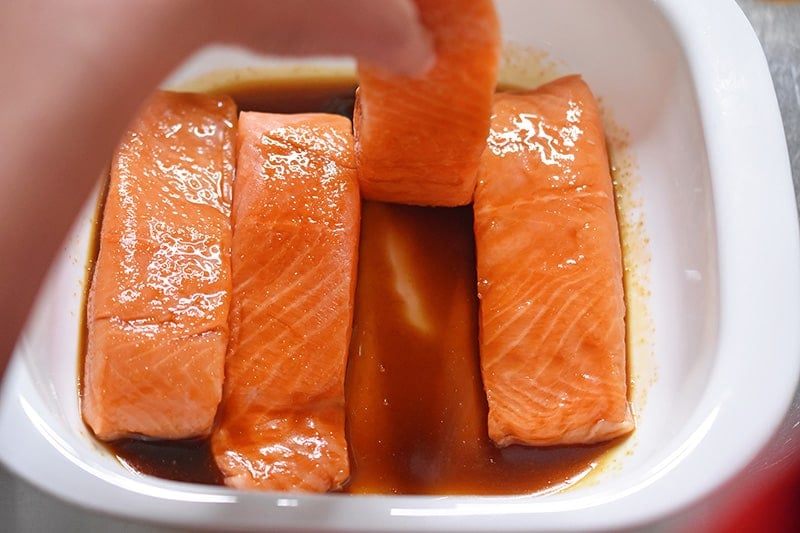
Keep the fillets skin-side up in the marinade until you’re ready to cook. You can marinate the fish for as little as 15 minutes, but no longer than 8 hours in a sealed container in the fridge.
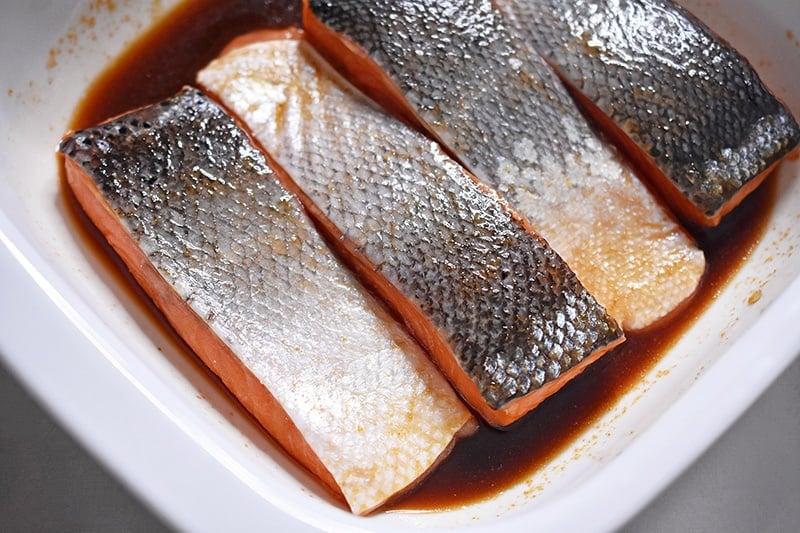
Ready to cook the teriyaki salmon? Heat the oven to 400°F with the rack in the middle. Place the salmon, skin-side down on a parchment-lined baking sheet. (You can skip the parchment, but I find that it helps with cleanup.)
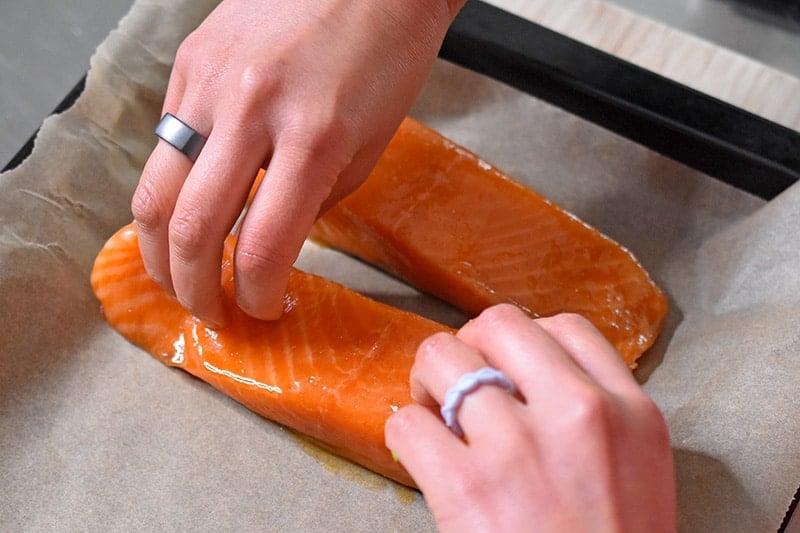
Pour some of the marinade from the dish onto the salmon (not the 2 tablespoons of reserved “clean” All-Purpose Stir-Fry Sauce).
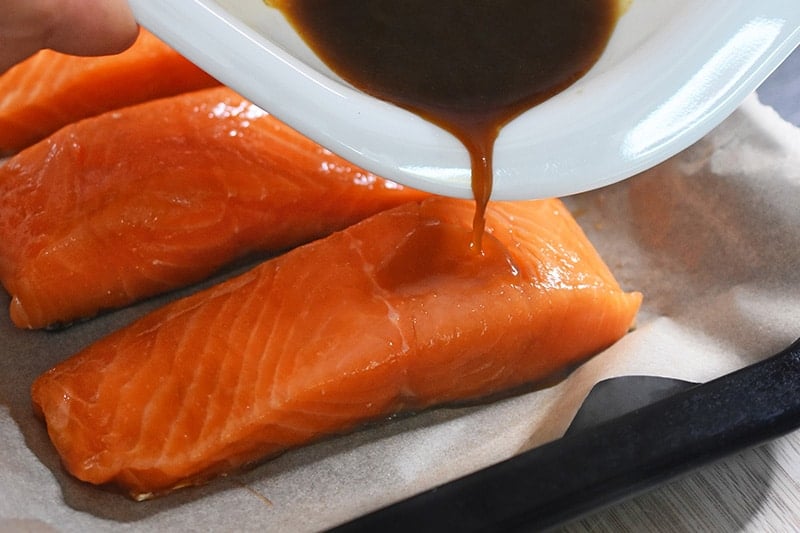
Bake the salmon for 8 to 12 minutes or until it is cooked to your preferred doneness.
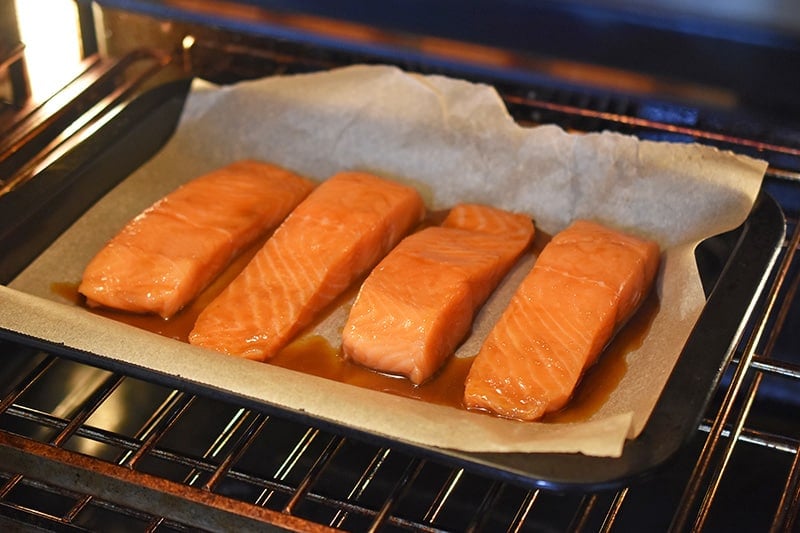
As I mentioned above, my family likes the salmon cooked to about medium, where the fish is cooked through, but the flesh is still moist and not chalky (about 130°F to 135°F in the thickest part of the fillet).
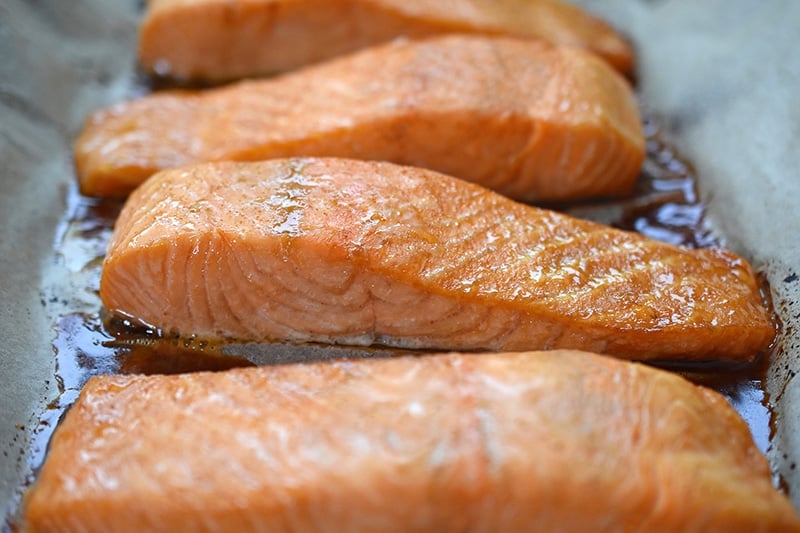
Once the salmon is finished cooking, brush on the reserved “fresh” All-Purpose Stir-Fry Sauce (not the stuff the salmon was marinated in) to add a bright kick of flavor.
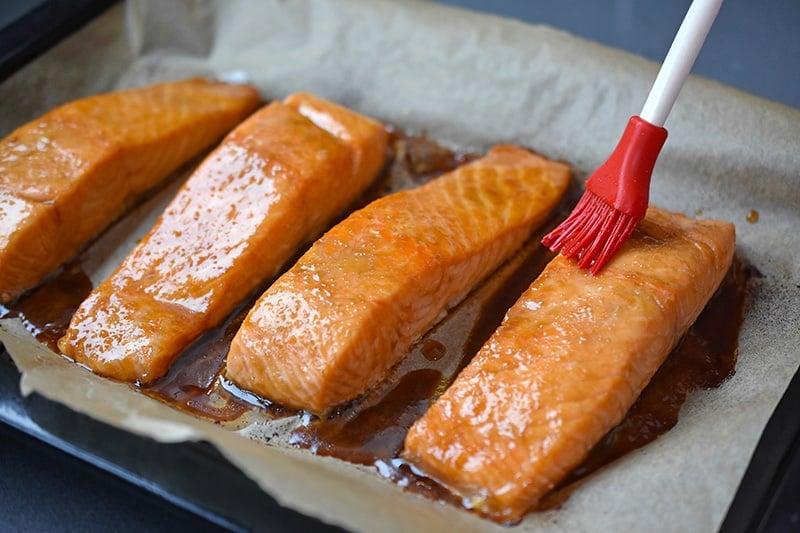
Sprinkle on toasted sesame seeds and sliced green onions (scallions) and enjoy!
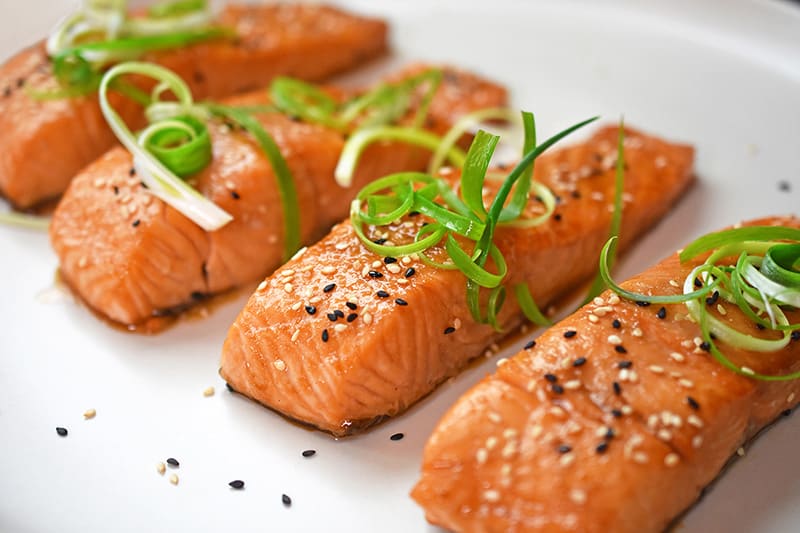
What do you serve with it?
Some great vegetables side dishes to serve with this Easy Teriyaki Salmon include Simple Cauliflower Rice, Pineapple Coleslaw, roasted vegetables, Japanese Potato Salad, stir-fried bok choy, or a big green salad. Don’t forget that the All-Purpose Stir-Fry Sauce can be used to make or dress your side dishes, too!
Better yet, turn it into a simple Sheet Pan Teriyaki Salmon dinner with lots of veggies!
How do you store leftovers?
Leftover teriyaki salmon can be stored in a sealed airtight container in the refrigerator for up to 4 days. I don’t love the taste of reheated cooked salmon, so I just toss cold leftovers on some salad greens when I eat it!
More healthy fish recipes
Looking for more recipe ideas? Head on over to my Recipe Index. You’ll also find exclusive recipes in my cookbooks, Nom Nom Paleo: Food for Humans (Andrews McMeel Publishing 2013), Ready or Not! (Andrews McMeel Publishing 2017), and Nom Nom Paleo: Let’s Go! (Andrews McMeel Publishing 2022).
PRINTER-FRIENDLY RECIPE CARD
Easy Teriyaki Salmon
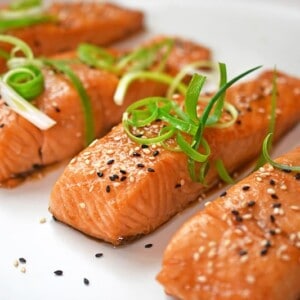
Equipment
- Rimmed dish
- Measuring cup
- Chef’s knife
- Cutting board
- Parchment Paper
- Meat thermometer
Ingredients
- 4 salmon fillets 5 ounces each
- ½ cup All-Purpose Stir-Fry Sauce divided
- 1 tablespoon toasted sesame seeds
- 2 scallions thinly sliced
Instructions
- Place the salmon fillets in a high-sided dish where they’ll fit snugly. Pour in most of the All-Purpose Stir-Fry Sauce, but reserve about 2 tablespoons of it. (You’ll brush it on at the end to add an extra punch of umami.)
- Turn the salmon in the marinade to coat well. Keep the fillets skin-side up in the marinade until you’re ready to cook. (Marinate the fish for as little as 15 minutes, but no longer than 8 hours in a sealed container in the fridge.)
- Heat the oven to 400°F with the rack in the middle.
- Place the salmon, skin-side down on a parchment-lined baking sheet.Pour some of the marinade from the dish onto the salmon (not the 2 tablespoons of reserved “clean” All-Purpose Stir-Fry Sauce).
- Bake the salmon for 8 to 12 minutes or until it is cooked to your preferred doneness. (I like the salmon cooked to about medium, about 130°F to 135°F in the thickest part of the fillet.)
- Once the salmon is finished cooking, brush on the reserved “fresh” All-Purpose Stir-Fry Sauce (not the stuff the salmon was marinated in) to add a bright kick of flavor.
- Sprinkle on toasted sesame seeds and sliced scallions.
Nutrition
Nutrition information is automatically calculated, so should only be used as an approximation.
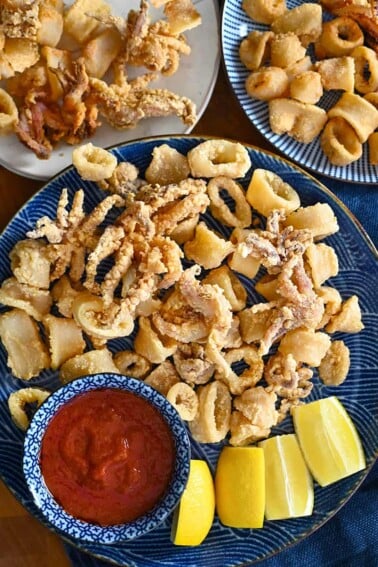
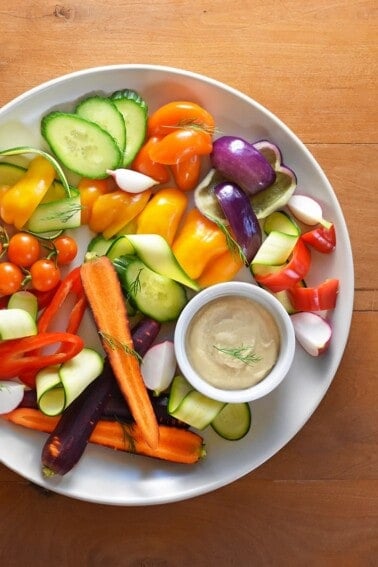
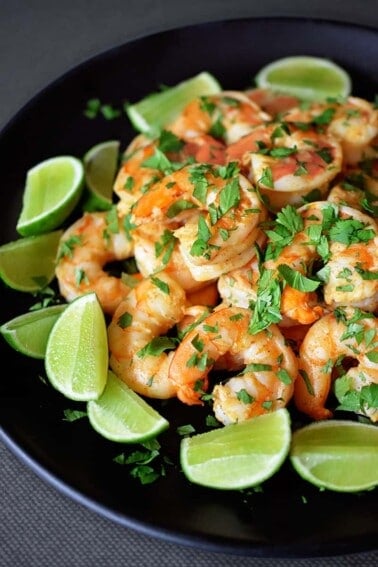
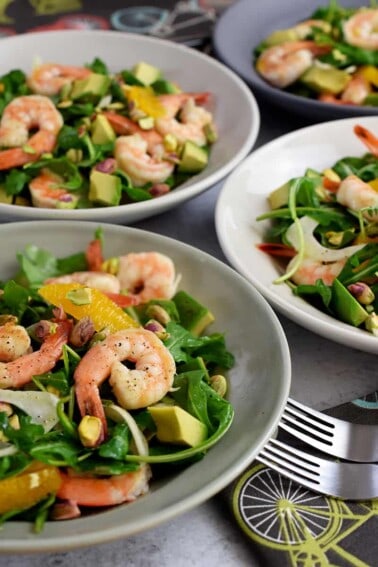
Wow! Thank you for your amazing work Michelle. I am so glad I’m not the only person who thinks sockeye is fishy omg. I thought if it was wild caught it should taste amazing. You are so careful with how you source your food. I now feel like it’s ok to eat Atlantic farmed salmon haha. Responsibly farmed of course hehe
This was amazing!!! Thank you!!!!
Soo impressively minimalist- I love this!
Using your All-Purpose Stir-Fry Sauce is the ONLY way we marinate salmon now! I leave the the fish in the marinade for at least 3 hours, and then we grill our fish instead of baking. ‘If’ we have leftovers (I usually make extra because we love it so much), it gets turned into delicious salmon salad sandwiches for lunch during the week. This marinade showcases the fish instead of over powering it! Love your cookbooks and recipes!
Fantastic, speedy, flavourful, healthy (beware of the sodium with the fish sauce? But at least we use coconut aminos instead of soya sauce.)
Thank you (again!), Michelle!
Used Atlantic salmon and it turned out great! Easy recipe with tasty results – win win! And thank you, Michelle, for putting the doneness temperatures in the recipe. Helps so much to make sure I don’t get overkilled salmon!
I have loved using the All Purpose Sauce in so many things, however, I feel like I must be doing something wrong. I left the fish in the marinade for 15 min before grilling, and it was so salty the salmon was inedible. When I use it on meat, the max time I can marinade is 8 to 10 min.
What am I doing wrong? I follow the measurements to the T. Any tips would be greatly appreciated. We love this sauce, but I want to avoid ruining meals in the future.
Thanks in advance for any tips!
Hmmmm…I’m not sure why the marinade is making the meat too salty. Is the sauce you’re making overly salty? Sometimes the brand of coconut aminos or fish sauce can be saltier. For example, Bragg’s coconut aminos can be saltier than the Thrive market brand I normally use. You can also always decrease the time you have the meat/seafood in the marinade.
Thank you for responding!! It is definitely the aminos. I use Bragg since that is all I can get where I live. I will adjust the marinating time. I love your recipes and videos, thank for doing what you do 😉